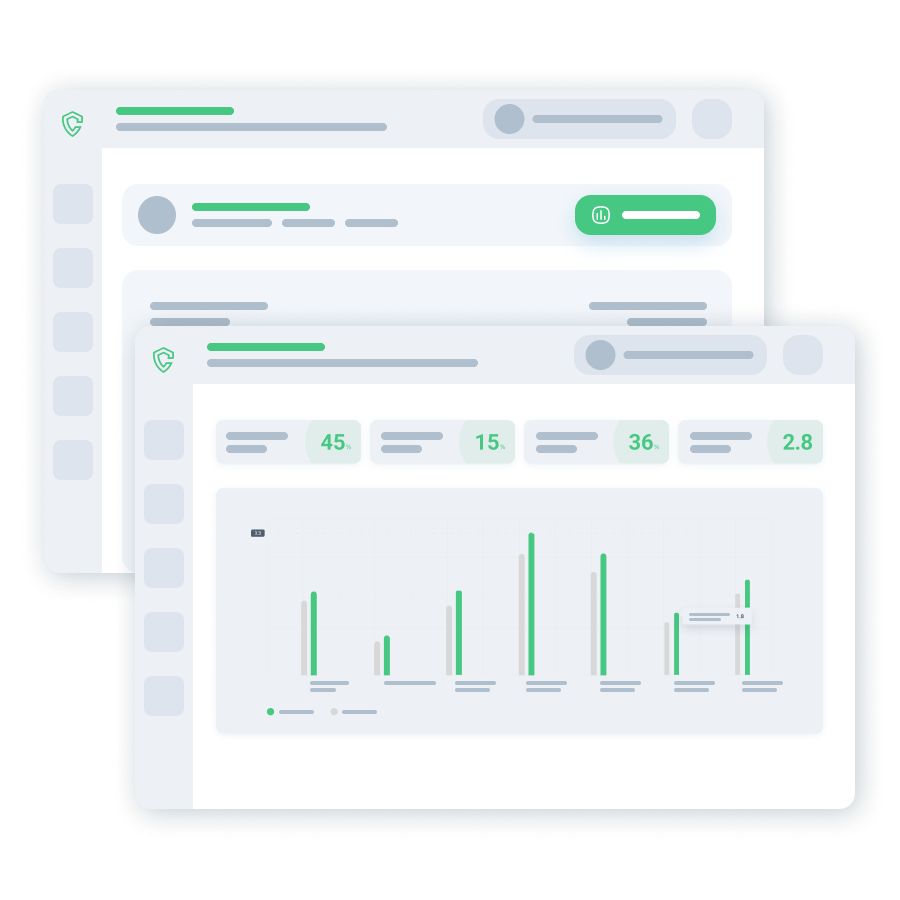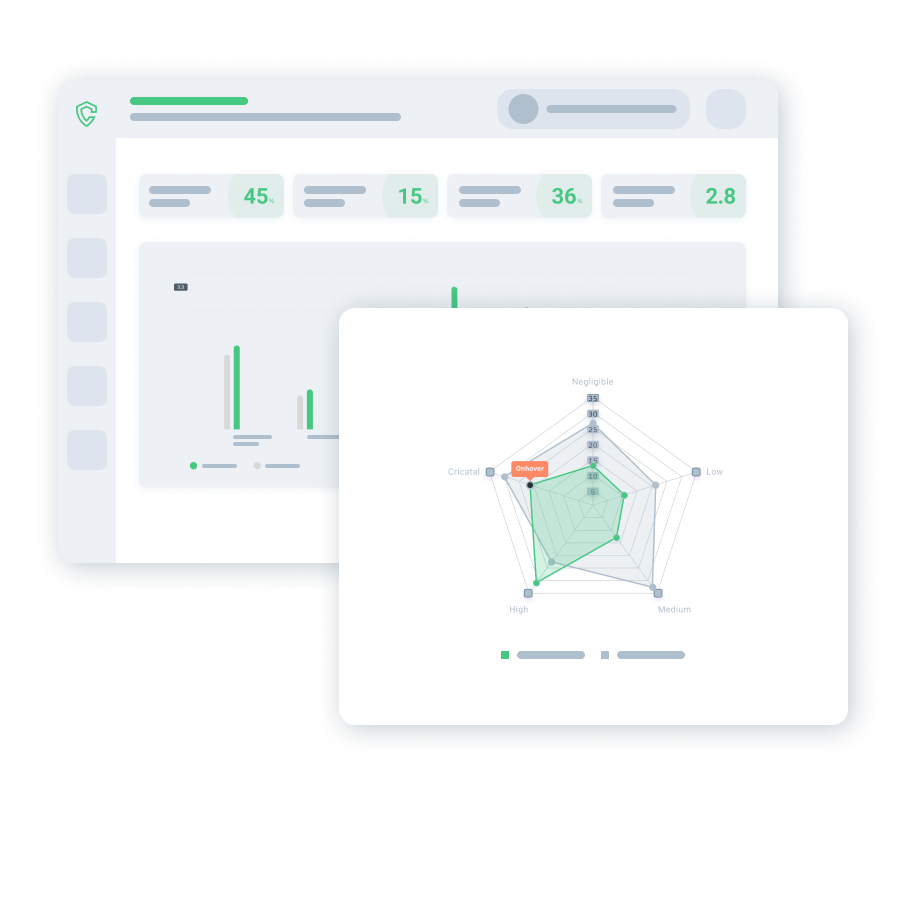Introduction
As cyberattacks increase in frequency and sophistication, organizations constantly make moves to secure their systems against the attacks and mitigate the effects of eventual compromise. In response to industry-targeted security threats, organizations in the same industry combine their individual experience and security strategy to build best practices specific to their industries.
Likewise, government bodies and regulatory organizations have put together guidelines and practices to help organizations keep their systems safe from ever-increasing cyber threats.
These efforts have birthed various cybersecurity frameworks and maturity models, including the Cybersecurity Capability Maturity Model (C2M2) and the National Institute of Standards and Technology Cybersecurity Framework (NIST CSF).
This article will discuss the NIST CSF and how to evaluate your security maturity level with the government-coordinated framework.
Introduction
As cyberattacks increase in frequency and sophistication, organizations constantly make moves to secure their systems against the attacks and mitigate the effects of eventual compromise. In response to industry-targeted security threats, organizations in the same industry combine their individual experience and security strategy to build best practices specific to their industries.
Likewise, government bodies and regulatory organizations have put together guidelines and practices to help organizations keep their systems safe from ever-increasing cyber threats.
These efforts have birthed various cybersecurity frameworks and maturity models, including the Cybersecurity Capability Maturity Model (C2M2) and the National Institute of Standards and Technology Cybersecurity Framework (NIST CSF).
This article will discuss the NIST CSF and how to evaluate your security maturity level with the government-coordinated framework.
What is NIST CSF?
Initially drafted as a set of guidelines for government departments and private organizations to track and improve their cybersecurity measures, the NIST Cyber Security Framework has rapidly metamorphosed into a gold standard for organizations to establish their cybersecurity program. The framework contains guidelines, industry-proven best practices, and recommendations to build, maintain, and improve a reliable organization-wide cybersecurity posture.
For organizations already running a mature cybersecurity program and those with no active cybersecurity program in place, NIST CSF provides valuable risk assessment and resolution techniques. A strong, complete, and robust cybersecurity program is the big picture of the NIST cybersecurity framework.
What is NIST CSF?
Initially drafted as a set of guidelines for government departments and private organizations to track and improve their cybersecurity measures, the NIST Cyber Security Framework has rapidly metamorphosed into a gold standard for organizations to establish their cybersecurity program. The framework contains guidelines, industry-proven best practices, and recommendations to build, maintain, and improve a reliable organization-wide cybersecurity posture.
For organizations already running a mature cybersecurity program and those with no active cybersecurity program in place, NIST CSF provides valuable risk assessment and resolution techniques. A strong, complete, and robust cybersecurity program is the big picture of the NIST cybersecurity framework.
NIST Cybersecurity Framework Functions
The NIST framework categorizes security activities, tools, capabilities, and processes into the following five core functions.
- Identify
- Protect
- Detect
- Respond
- Recover
NIST Cybersecurity Framework Functions
The NIST framework categorizes security activities, tools, capabilities, and processes into the following five core functions.
- Identify
- Protect
- Detect
- Respond
- Recover
1. Identify
This is the primary function for successfully implementing the NIST cybersecurity framework. It promotes activities and procedures that assist organizations in understanding their current security status and cyber risks related to the data, assets, people, and systems in their cyber environment.
Essential actions prescribed by the identify function are specified across the following categories.
- Asset management: Identifying hardware and software assets and laying the groundwork for asset management.
- Business environment: Determining the organization’s crucial business environment and its supply chain role.
- Governance: This entails identifying established security policies to define governance and legal and regulatory requirements for the organization’s cybersecurity capabilities.
- Risk assessment: Find weaknesses and potential threats to the resources inside and outside the organization.
- Risk Management Strategy: Develop and implement a risk management strategy that includes risk tolerance.
2. Protect
The protect function outlines important procedures to safeguard an organization’s cyber environment to maintain uninterrupted service delivery and business continuity. When the protect function is implemented correctly, businesses can minimize the effects of cybersecurity incidents and avoid interfering with the delivery of vital services.
The following are the outlined activities to implement the protect function.
- Identity Management and Access Control: The implementation of security measures to control access to the organization’s physical, digital, and remote systems.
- Awareness and training: Awareness-raising activities and specialized training tailored to each employee’s place in the organization’s cybersecurity program will increase staff empowerment and security awareness.
- Data Security: Align data security measures with the organization’s risk strategy to protect the “CIA triad” (confidentiality, integrity, and availability) of information.
- Information Protection Processes: Implement processes and procedures to manage the protection of sensitive information systems and assets.
- Maintenance: Ensure organizational assets and resources remain usable and operable.
- Protective Technology: Implement tools and procedures to ensure the security and resilience of IT systems are consistent with organizational policies and procedures.
1. Identify
This is the primary function for successfully implementing the NIST cybersecurity framework. It promotes activities and procedures that assist organizations in understanding their current security status and cyber risks related to the data, assets, people, and systems in their cyber environment.
Essential actions prescribed by the identify function are specified across the following categories.
- Asset management: Identifying hardware and software assets and laying the groundwork for asset management.
- Business environment: Determining the organization’s crucial business environment and its supply chain role.
- Governance: This entails identifying established security policies to define governance and legal and regulatory requirements for the organization’s cybersecurity capabilities.
- Risk assessment: Find weaknesses and potential threats to the resources inside and outside the organization.
- Risk Management Strategy: Develop and implement a risk management strategy that includes risk tolerance.
2. Protect
The protect function outlines important procedures to safeguard an organization’s cyber environment to maintain uninterrupted service delivery and business continuity. When the protect function is implemented correctly, businesses can minimize the effects of cybersecurity incidents and avoid interfering with the delivery of vital services.
The following are the outlined activities to implement the protect function.
- Identity Management and Access Control: The implementation of security measures to control access to the organization’s physical, digital, and remote systems.
- Awareness and training: Awareness-raising activities and specialized training tailored to each employee’s place in the organization’s cybersecurity program will increase staff empowerment and security awareness.
- Data Security: Align data security measures with the organization’s risk strategy to protect the “CIA triad” (confidentiality, integrity, and availability) of information.
- Information Protection Processes: Implement processes and procedures to manage the protection of sensitive information systems and assets.
- Maintenance: Ensure organizational assets and resources remain usable and operable.
- Protective Technology: Implement tools and procedures to ensure the security and resilience of IT systems are consistent with organizational policies and procedures.
3. Detect
It is imperative to detect and identify cybersecurity incidents and threats affecting the organization and its assets. This function outlines the activities and procedures to help identify the events.
Categories of activities involved include.
- Anomalies and Events: Monitor and detect anomalies and suspicious activities or events and assess the potential impact.
- Security and continuous monitoring: Implement security measures and provide continuous monitoring capabilities to verify their effectiveness regularly.
4. Respond
The respond function describes the appropriate steps to take as soon as a cybersecurity incident is detected to quickly contain its impact and reduce damage. NIST CSF classifies the activities under the following categories.
- Response Planning: Plan the protocols to follow when responding to detected security threats.
- Communications: Stay in touch with internal and external stakeholders and keep them informed on the state of the security event.
- Analysis: To hasten effective response and post-incident recovery, conduct forensic and impact analysis.
- Mitigation: Engage in strategic actions to lessen the impact of the incident and its effects.
- Improvements: Document the event’s discovery process and response activities and incorporate lessons learned to improve the cybersecurity program further.
3. Detect
It is imperative to detect and identify cybersecurity incidents and threats affecting the organization and its assets. This function outlines the activities and procedures to help identify the events.
Categories of activities involved include.
- Anomalies and Events: Monitor and detect anomalies and suspicious activities or events and assess the potential impact.
- Security and continuous monitoring: Implement security measures and provide continuous monitoring capabilities to verify their effectiveness regularly.
4. Respond
The respond function describes the appropriate steps to take as soon as a cybersecurity incident is detected to quickly contain its impact and reduce damage. NIST CSF classifies the activities under the following categories.
- Response Planning: Plan the protocols to follow when responding to detected security threats.
- Communications: Stay in touch with internal and external stakeholders and keep them informed on the state of the security event.
- Analysis: To hasten effective response and post-incident recovery, conduct forensic and impact analysis.
- Mitigation: Engage in strategic actions to lessen the impact of the incident and its effects.
- Improvements: Document the event’s discovery process and response activities and incorporate lessons learned to improve the cybersecurity program further.
5. Recover
It is critical to establish robust restoring capabilities and services following a security incident. The recover function outlines activities to ensure timely restoration of IT systems and improvement of the system by incorporating the lessons learned in the detection and response process.
- Recovery Planning: Describe the steps to take to put the impacted systems and assets back in working order.
- Improvements: To strengthen the security posture, review current security measures and take into account fresh insights.
- Communication: Improved security should be communicated, and internal and external stakeholders should be made aware of the steps they can take to maintain the resiliency of the organization’s environment.
5. Recover
It is critical to establish robust restoring capabilities and services following a security incident. The recover function outlines activities to ensure timely restoration of IT systems and improvement of the system by incorporating the lessons learned in the detection and response process.
- Recovery Planning: Describe the steps to take to put the impacted systems and assets back in working order.
- Improvements: To strengthen the security posture, review current security measures and take into account fresh insights.
- Communication: Improved security should be communicated, and internal and external stakeholders should be made aware of the steps they can take to maintain the resiliency of the organization’s environment.
NIST Implementation Tiers
Ranging from Partial (Tier 1) to Adaptive (Tier 4), the NIST cybersecurity framework provides four levels to measure the effective implementation of the framework guidelines in an organization.
Partial (Tier 1) — Cyber risk management processes are not formalized and documented in the earliest stage. There is no proper awareness of identifying and managing cyber risks, and the response to security incidents is often reactive.
Informed (Tier 2) — At this stage, the NIST cybersecurity framework is gradually being implemented in the organization. Key stakeholders are aware of security risks, and while there might not be organizational-wide security policies, the management is aware of risks and responds to incidents as they occur.
Repeatable (Tier 3) — At the third tier of the NIST CSF, organizations document their security practices. Formal risk management procedures are established, and the procedures are repeatable.
Adaptive (Tier 4) — The final tier of NIST CSF implementation promotes continuous maintenance and improvement of the established cybersecurity risk management policies. Organizations that have reached this tier regularly evaluate their risk management processes and adapt their policies based on lessons learned and insights gained from the periodic assessment of their cybersecurity posture.
Even though their scopes are different, we can relate these four tiers of implementation of the NIST CSF to the CMMI maturity levels.
The Cybersecurity Maturity Model Integration (CMMI) maturity levels rate an organization’s cybersecurity posture on a scale of 1-5, allowing them to benchmark their current-state” and provide clear goals and aims to reach the next level “target-state”.
The following are the maturity levels.
- Initial
- Managed
- Defined
- Quantitatively Managed
- Optimizing
Unlike NIST CSF tiers, CMMI maturity levels measure top-level security posture and how well an organization is implementing its preferred cybersecurity framework.
Each maturity level means the same thing as the English interpretation. At the initial stage, cybersecurity practices are non-existent or barely recognized. At the managed state, cybersecurity risks are gaining recognition. The defined level shows that an organization has recognized and established a cybersecurity framework and procedure that works best for them. The quantitatively managed level demonstrates that organizations can implement quantified and predictable procedures to meet organizational goals. The top level, optimizing, shows that an organization’s cybersecurity maturity has reached a gold level where the focus of security staff has shifted from the initial phases to continuous maintenance and management of their security practices.
NIST Implementation Tiers
Ranging from Partial (Tier 1) to Adaptive (Tier 4), the NIST cybersecurity framework provides four levels to measure the effective implementation of the framework guidelines in an organization.
Partial (Tier 1) — Cyber risk management processes are not formalized and documented in the earliest stage. There is no proper awareness of identifying and managing cyber risks, and the response to security incidents is often reactive.
Informed (Tier 2) — At this stage, the NIST cybersecurity framework is gradually being implemented in the organization. Key stakeholders are aware of security risks, and while there might not be organizational-wide security policies, the management is aware of risks and responds to incidents as they occur.
Repeatable (Tier 3) — At the third tier of the NIST CSF, organizations document their security practices. Formal risk management procedures are established, and the procedures are repeatable.
Adaptive (Tier 4) — The final tier of NIST CSF implementation promotes continuous maintenance and improvement of the established cybersecurity risk management policies. Organizations that have reached this tier regularly evaluate their risk management processes and adapt their policies based on lessons learned and insights gained from the periodic assessment of their cybersecurity posture.
Even though their scopes are different, we can relate these four tiers of implementation of the NIST CSF to the CMMI maturity levels.
The Cybersecurity Maturity Model Integration (CMMI) maturity levels rate an organization’s cybersecurity posture on a scale of 1-5, allowing them to benchmark their current-state” and provide clear goals and aims to reach the next level “target-state”.
The following are the maturity levels.
- Initial
- Managed
- Defined
- Quantitatively Managed
- Optimizing
Unlike NIST CSF tiers, CMMI maturity levels measure top-level security posture and how well an organization is implementing its preferred cybersecurity framework.
Each maturity level means the same thing as the English interpretation. At the initial stage, cybersecurity practices are non-existent or barely recognized. At the managed state, cybersecurity risks are gaining recognition. The defined level shows that an organization has recognized and established a cybersecurity framework and procedure that works best for them. The quantitatively managed level demonstrates that organizations can implement quantified and predictable procedures to meet organizational goals. The top level, optimizing, shows that an organization’s cybersecurity maturity has reached a gold level where the focus of security staff has shifted from the initial phases to continuous maintenance and management of their security practices.
How to Implement NIST CSF Capability Across CMMI Maturity Levels
The successful implementation of the NIST cybersecurity framework requires organizations first to evaluate their risk management capabilities in the 5 functions and then benchmark them with the appropriate CMMI maturity level.
Evaluate your current NIST CSF implementation using the NIST CSF free evaluation tool—the tool provides an overview of your current security postures, giving you a starting point to maintain and improve your practices. Depending on your NIST CSF implementation analysis report, benchmark your current security posture with the appropriate CMMI maturity level and identify the next target level of maturity. Afterward, determine the business impact of your current implementation of cybersecurity procedures and iteratively follow the outlined activities of each function of the NIST framework to improve and get closer to your targets.
How to Implement NIST CSF Capability Across CMMI Maturity Levels
The successful implementation of the NIST cybersecurity framework requires organizations first to evaluate their risk management capabilities in the 5 functions and then benchmark them with the appropriate CMMI maturity level.
Evaluate your current NIST CSF implementation using the NIST CSF free evaluation tool—the tool provides an overview of your current security postures, giving you a starting point to maintain and improve your practices. Depending on your NIST CSF implementation analysis report, benchmark your current security posture with the appropriate CMMI maturity level and identify the next target level of maturity. Afterward, determine the business impact of your current implementation of cybersecurity procedures and iteratively follow the outlined activities of each function of the NIST framework to improve and get closer to your targets.
Conclusion
Conclusion
See also:



